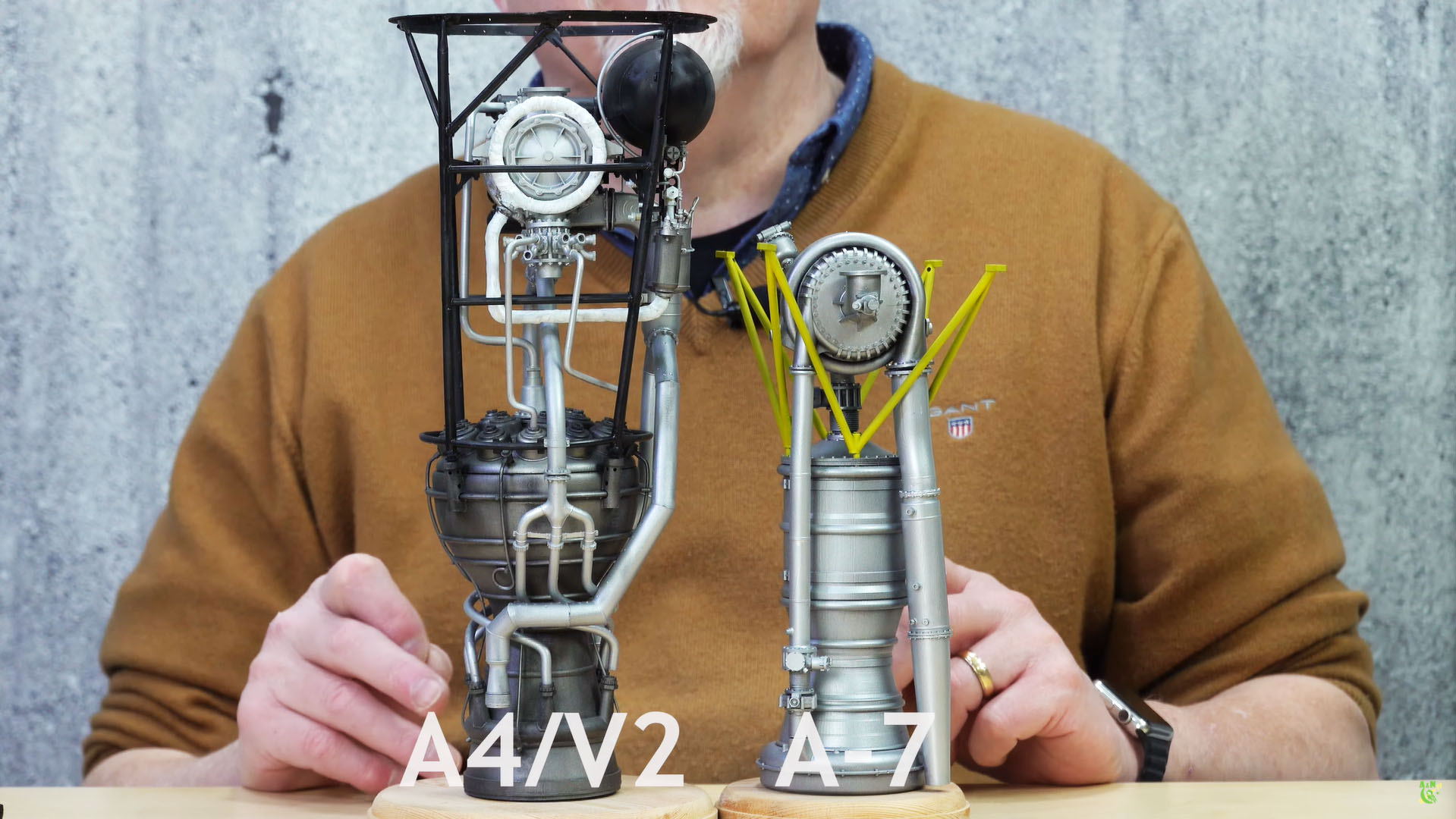
Comparative anatomy: the power plant of A4 and A-7 LPRE (Redstone)
During WWII, the urgency of Germany’s V2 rocket program did not allow the technology to mature beyond the prototype stage. The A4/V2 missile employed in combat operations was essentially an early research prototype placed in series production due to the exigencies of war (contrary to popular conception, the V2 was never ‘mass-produced’).
The engineers tasked with addressing the issues of the fledgling missile were presented with a daunting challenge. They needed to rectify multiple flaws and malfunctions while also keeping up with the demand for increased missile production for the front lines. After the war and the dispersal of Germany’s rocket specialists among the Allies, with the bulk going voluntarily to the USA, the group’s understanding of these problem areas provided the spur for the rapid and successful evolution of liquid propellant rocket engines (LPRE) in the first post-war decade. To hunt down the ghost of the V2, Robert briefly examines some of the more noticeable shortcomings of the A4/V2 power plant and ties them to corresponding but improved details in the NAA/Rocketdyne A-7 LPRE of 1951.

